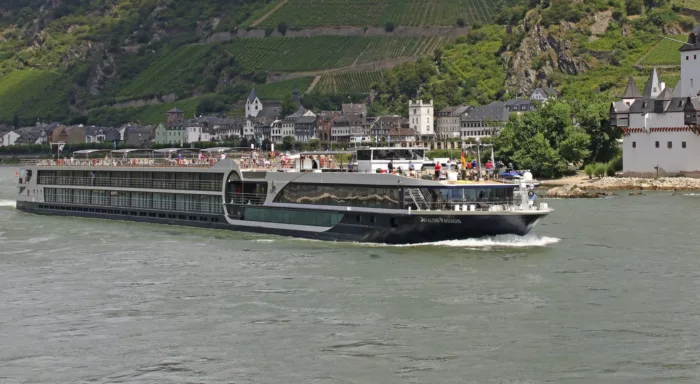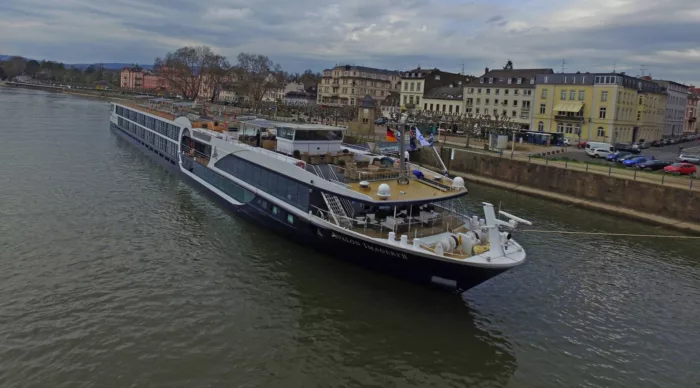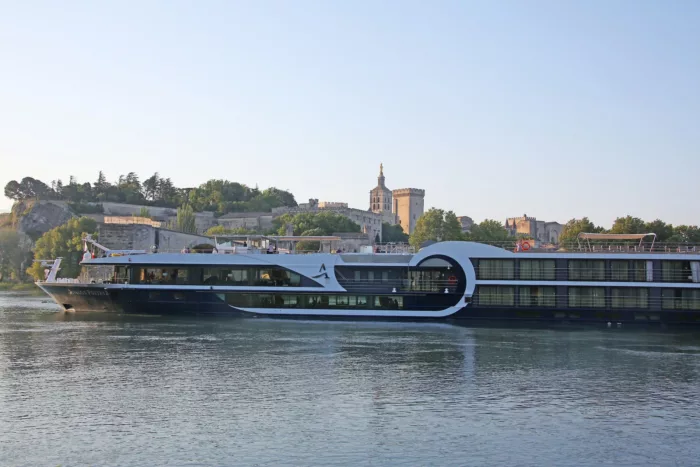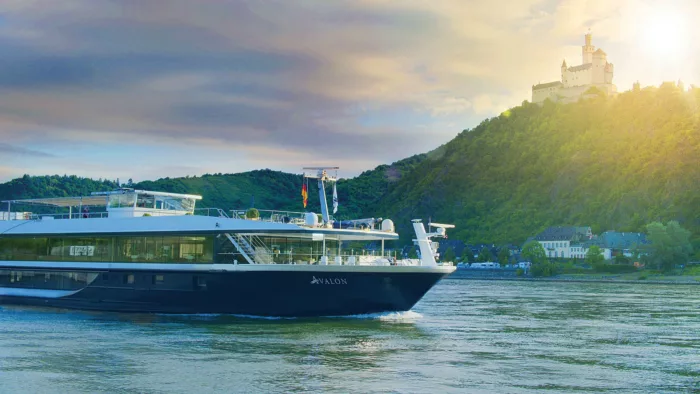
Avalon Waterways
Avalon's suite ships in Europe and Southeast Asia boast wall-to-wall windows that transform cabins into open-air balconies, and there are also river-facing beds to make the most of passing views.
The line’s Active & Discovery sailings have optional action-packed experiences alongside traditional shore tours.
Avalon Waterways also offers short-break cruises of three and four nights.
166
Passengers
47
Crew
2016
Launched
2775t
Tonnage
135m
Length
11.45m
Width
13kts
Speed
4
Decks
EUR
Currency
Cruise Itinerary
Days 1 - 2
Budapest, Hungary
Day 3
Bratislava, Slovakia
Day 4
Vienna, Austria
Day 5
Dürnstein, Austria
Day 6
Passau, Germany
Day 7
Regensburg, Germany
Day 8
Roth, Germany
Day 9
Bamberg, Germany
Day 10
Volkach, Germany
Day 11
Würzburg, Germany
Day 12
Miltenberg, Germany
Day 13
Rüdesheim, Germany
Day 14
Cologne, Germany
Days 15 - 16
Amsterdam, Netherlands

Days 1 - 2
Budapest, Hungary

Day 3
Bratislava, Slovakia

Day 4
Vienna, Austria

Day 5
Dürnstein, Austria

Day 6
Passau, Germany

Day 7
Regensburg, Germany

Day 8
Roth, Germany

Day 9
Bamberg, Germany

Day 10
Volkach, Germany

Day 11
Würzburg, Germany

Day 12
Miltenberg, Germany

Day 13
Rüdesheim, Germany

Day 14
Cologne, Germany

Days 15 - 16
Amsterdam, Netherlands
Ship Details


Avalon Waterways
Avalon Passion
We're so passionate about our Suite Ships, we christened this Suite Ship the Avalon Passion. Gracing Europe's waterways with style and relaxed luxury as only Avalon can deliver, the Avalon Passion lives up to its name.
Cabins
All Prices






